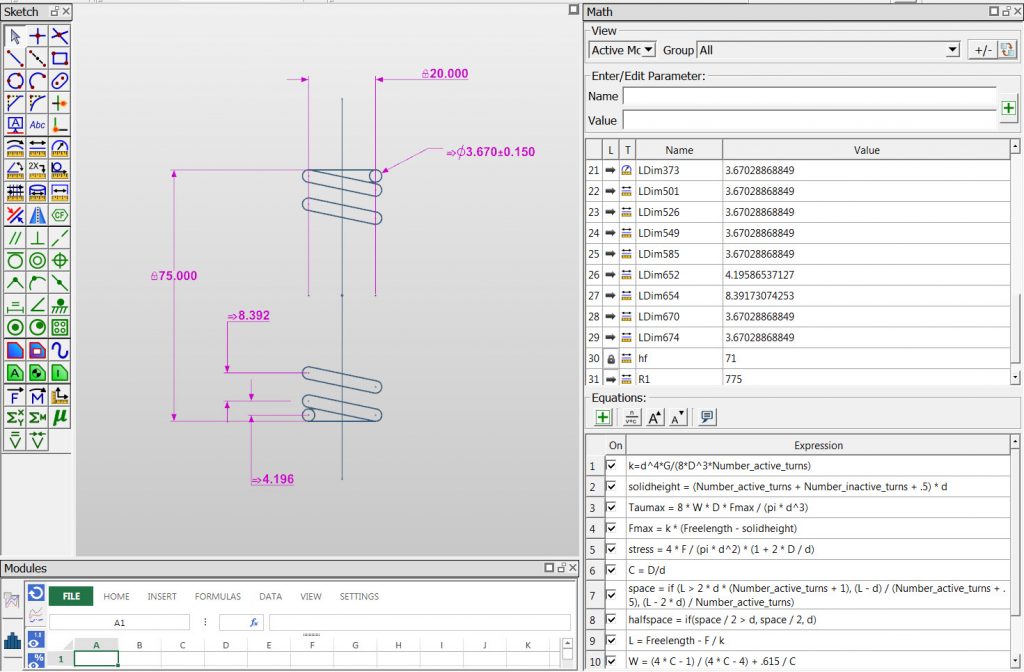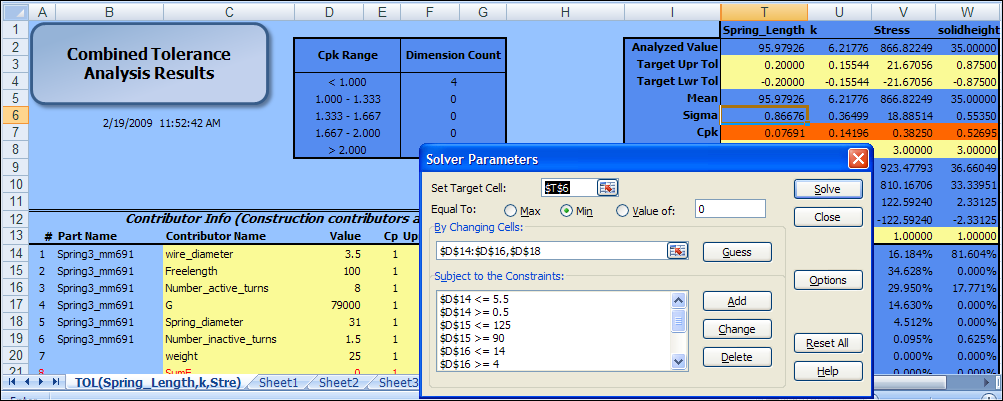SMART COMPONENTS
The unique approach to modeling in Enventive Concept is based on Smart Components™, which are composed of both geometric and functional data. Smart Components accumulate engineering knowledge in the course of product design activities and preserve the knowledge for reuse in future products.
Engineers can embed equations and empirical data into Smart Components, enabling the components to compute their own functional properties. For example, bearings can compute their B-10 life, springs can compute their force-deflection curves, shafts can compute their deflection under load, and motors can compute their RPM-torque curves.
Functional inter-dependencies between Smart Components are easily created and managed — one component’s functional outputs can be connected to another’s functional inputs. For example, the force generated by a spring produces a load on a shaft, which transmits the load to a bearing.
These component-level knowledge modules drastically reduce the time mechanical engineers spend looking for information and enable collaborative system-level modeling, thereby accelerating system performance analysis and optimization.

SMART ASSEMBLIES
Smart Components are the building blocks that collectively form Smart Assemblies™ — used to simulate, optimize, and analyze system performance. Smart Assemblies support collaborative modeling and a flexible, two-way management process. Team members can originate and migrate changes from components to assemblies or from assemblies to components.
Smart Assemblies can also roll up costs, giving team members a running total on manufacturing cost estimates. Integrated spreadsheets make it a snap for costing engineers to embed information, such as costing formulas, directly into component definitions.
SMART COMPONENT EXAMPLE
The following example of a spring model highlights some of the main advantages of Enventive Concept’s Smart Components™.
Complete, integrated model information
Enventive Concept enables engineers to embed formulas computing functional properties in component models, as shown in this spring model example. Engineers can simultaneously examine and modify graphical and mathematical views of their model. Changes are automatically reflected throughout the model, in the sketch, equations, and parameters, so you never have to worry about keeping data in sync.

Integrated equations compute properties
The equations for computing the spring properties are an integral part of the spring. The equations shown in this example are contained in a spring sub-component of the assembly. We can drive the values of the parameters contained in the sub-component from the assembly and vice versa. Notice that the equations set values for various parameters, such as the wire diameter, solid height, number of turns, spring diameter, and so on.

Tolerance analysis identifies contributors
When the spring component is used in an assembly, tolerance analyses involving the spring will identify contributors from the spring equations, such as “wire_diameter,” as shown in the “Contributor Info” section of the tolerance analysis report in this illustration.

Matrix analysis identifies contributors common to all analyzed parameters
We can run tolerance analysis on multiple parameters in order to see a matrix of the contributors common to all the analyzed parameters. In the example shown below, we’ve analyzed a group of parameters, including “SpringLength,” “Stress,” and “solidheight.” Note that the contributors shown in this report reflect the contribution to the set of parameters we analyzed, not just individual parameters.

Optimizing critical parameters reduces variation
Using Enventive Concept’s native spreadsheet, optimization may be run directly from the tolerance analysis report.
In the illustration below, the optimizer has been set up to minimize variation (minimize Sigma) by changing contributor values, including “wire_diameter,” “Freelength, “Number_active_turns,” and “Spring_diameter.” Boundaries (constraints) have been specified for these parameters to drive the Sigma value. We’ve also specified target values for the analyzed parameters: “Spring_Length” must equal 85.0, “Stress” must be less than or equal to 490.0, and “solidheight” must be less than or equal to 50.

As shown below, the optimization finds nominal values that meet the target performance goals while minimizing variation. Note that the “Spring_Length,” “Stress,” and “solidheight” parameters meet the specified target values, and variation has been reduced significantly, all without tightening tolerances.

Further reading on our tolerance analysis software
Back to Enventive Concept
Check out the latest Enventive Concept news
Learn about the next Enventive Concept highlighted feature: Performance Modeling


